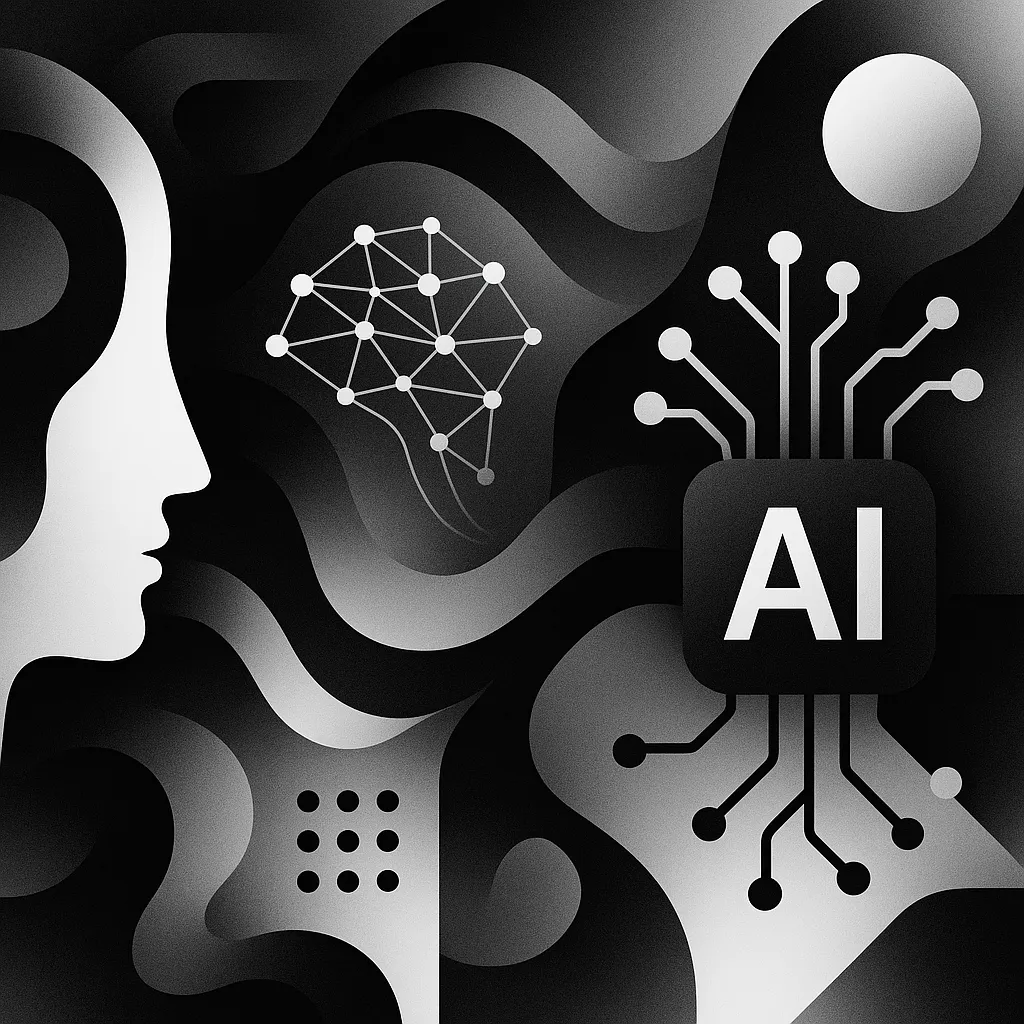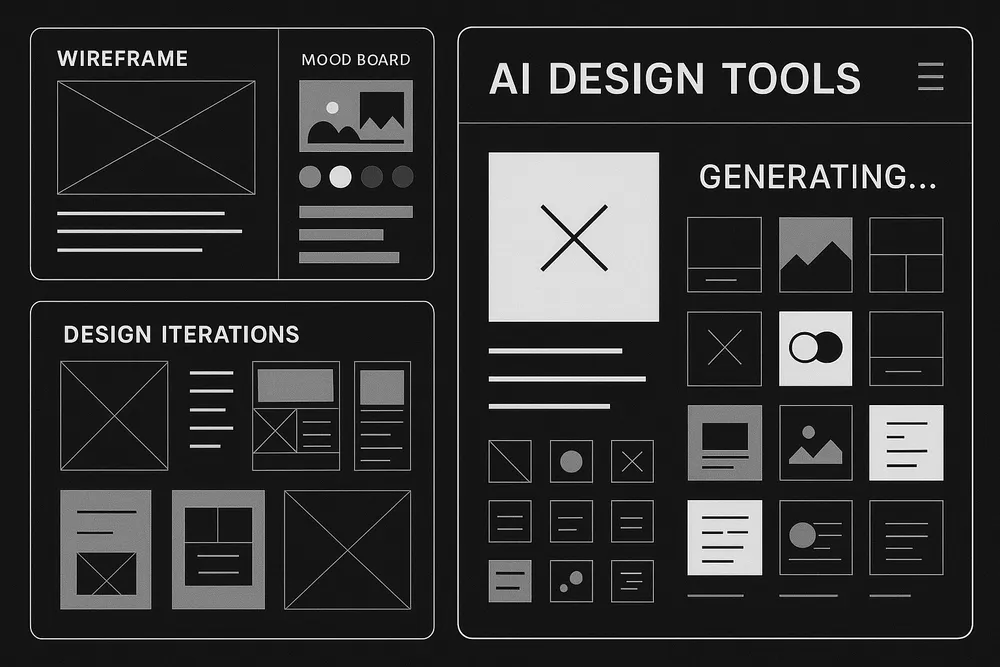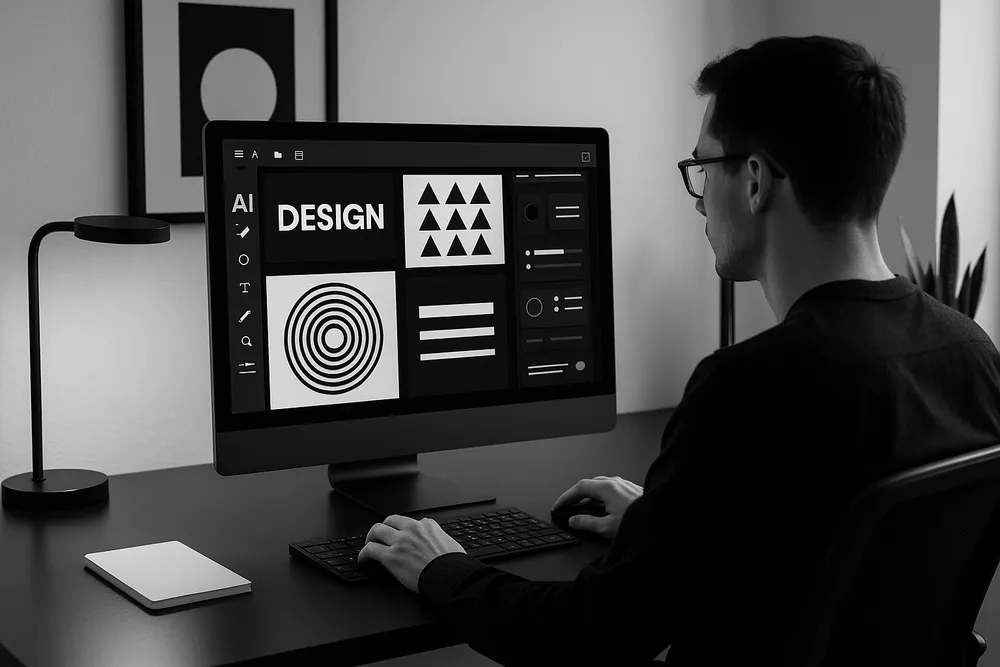In the world of design, where trends shift like seasons, the timeless elegance of black and white remains a constant. It’s the bedrock of visual communication, a testament to the power of contrast, form, and simplicity. But what happens when this classic aesthetic meets the cutting edge of technology? The result is a creative revolution, where AI-assisted graphic design is not just a fleeting trend but a fundamental shift in how we create. For lovers of monochrome and minimalist design, artificial intelligence is not a replacement for human creativity but a powerful co-pilot, unlocking new levels of efficiency and inspiration.
As we move further into 2025, the conversation around AI in design has shifted from fear to collaboration. Designers are discovering that AI tools can handle the tedious, time-consuming tasks, freeing them up to focus on what truly matters: strategy, storytelling, and groundbreaking creative concepts. This is especially true in the realm of black and white design, where precision and clarity are paramount. From generating complex patterns in seconds to offering data-driven layout suggestions, AI design tools 2025 are poised to become an indispensable part of the modern designer’s toolkit.
The Rise of the AI Co-Pilot: A New Era of Creative Collaboration
The narrative of AI replacing artists is quickly becoming outdated. Instead, we are entering an era of AI creative collaboration, where machine intelligence augments human ingenuity. Think of AI as an incredibly skilled, tireless assistant. It can generate a dozen mood boards in the time it takes to brew a cup of coffee, analyze thousands of data points to suggest the most effective typography, and even create 3D models from simple 2D sketches. This partnership allows designers to explore more creative avenues than ever before, pushing the boundaries of what’s possible within the elegant constraints of a monochrome palette.
This new workflow is not about sacrificing artistic control but enhancing it. By automating the more mechanical aspects of design, AI empowers creatives to work faster, smarter, and more strategically. As noted in a recent article on the future of graphic design, “The future belongs to designers who know how to blend human creativity with machine intelligence” [1]. This synergy is particularly potent in black and white design, where the focus is on fundamental principles. With AI handling the technical heavy lifting, designers can dedicate more time to perfecting the nuances of contrast, balance, and composition, elevating their work from merely beautiful to truly impactful.
The transformation is already visible across the industry. Designers who once spent hours manually adjusting layouts now use AI to generate multiple variations instantly. Those who struggled with creating consistent brand elements can now rely on machine learning algorithms to maintain visual coherence across hundreds of assets. This efficiency gain doesn’t diminish creativity; it amplifies it by removing barriers and expanding possibilities.

AI-Powered Tools Transforming Monochrome Design
The market is now brimming with innovative AI graphic design automation tools that cater to a wide range of creative needs. For those of us who live and breathe black and white, these tools offer a treasure trove of possibilities. AI-powered image editors can instantly convert color photographs into stunning high-contrast monochrome portraits, bringing out a level of detail and emotional depth that might have taken hours to achieve manually. Other tools specialize in generating intricate geometric patterns or organic textures, perfect for adding a unique touch to minimalist designs.
Beyond image manipulation, AI is also making waves in the world of branding and layout. There are now platforms that can generate entire branding packages—logos, color palettes, and typography systems—based on a few simple keywords. While these tools are still in their early stages, they offer a fascinating glimpse into a future where designers can rapidly prototype and iterate on ideas. The sophistication of these tools continues to improve, with some now capable of understanding brand personality and translating it into visual elements that feel authentically human-crafted.
For monochrome enthusiasts, specialized AI tools are emerging that understand the unique challenges of working within a limited palette. These systems can analyze the emotional impact of different gray tones, suggest optimal contrast ratios for accessibility, and even predict how designs will perform across various media. The result is a more informed, data-driven approach to design that doesn’t sacrifice artistic vision but enhances it with scientific precision.
Streamlining Workflows and Unleashing Creativity
One of the most significant benefits of integrating machine learning graphic design into your workflow is the dramatic increase in efficiency. Repetitive tasks that once consumed a significant portion of a designer’s day can now be automated, freeing up valuable time for more strategic and creative pursuits. This could be anything from batch-editing photos to generating social media graphics in various sizes. The result is a more agile and responsive design process, allowing for greater experimentation and refinement.
This newfound efficiency is not just about speed; it’s about expanding creative capacity. When designers are not bogged down by mundane tasks, they have more mental bandwidth to explore new ideas and push creative boundaries. This is where the true power of AI in design lies. It’s not about replacing the designer’s vision but amplifying it. The technology serves as a creative multiplier, enabling designers to pursue more ambitious projects and explore concepts that would have been impractical with traditional methods.
Consider the workflow of creating a comprehensive brand identity in black and white. Traditionally, this might involve weeks of manual iteration, testing different combinations of typography, layouts, and visual elements. With AI assistance, designers can generate hundreds of variations in hours, quickly identifying the most promising directions and focusing their human expertise on refinement and strategic decision-making. For more inspiration on how to create impactful designs with a limited palette, explore our comprehensive guide on Monochrome Magic.
The Psychology of AI-Enhanced Minimalism
Interestingly, as AI becomes more integrated into our design tools, it’s sparking a conversation about the very nature of minimalism. Some argue that the rise of AI could lead to a resurgence of more expressive, emotionally resonant designs. However, a more optimistic perspective suggests that AI will free designers from the constraints of rigid minimalism, allowing for a new wave of creativity that is both deeply personal and technologically advanced. As one writer eloquently puts it, AI might just be the key to “bringing soul back to UX” [2].
This tension between minimalism and expression is at the heart of the modern design conversation. While the clean, uncluttered aesthetic of minimalism will always have its place, particularly in the world of luxury branding, there is a growing desire for designs that feel more human, more authentic, and more emotionally resonant. The challenge for designers is to find a way to balance these two seemingly opposing forces. And with the help of AI, they now have a powerful new tool to help them do just that.
The psychological impact of AI-enhanced design extends beyond aesthetics. When AI handles routine tasks, designers report feeling more creative and less constrained by technical limitations. This mental shift often leads to more innovative solutions and a willingness to experiment with unconventional approaches. In the context of black and white design, this freedom can result in more nuanced use of negative space, more sophisticated typography treatments, and more emotionally compelling visual narratives.

Black and White in the Age of AI: A Timeless Aesthetic Reimagined
So, what does all of this mean for the future of black and white design? In short, the future is brighter than ever. The timeless appeal of monochrome is not diminished by the rise of AI but amplified by it. With AI-powered tools, designers can create black and white visuals that are more intricate, more impactful, and more innovative than ever before. From hyper-realistic portraits to mind-bending abstract patterns, the creative possibilities are virtually limitless.
The integration of AI into monochrome design workflows is creating new opportunities for personalization and customization. AI can analyze user preferences, cultural contexts, and brand requirements to generate designs that are not only aesthetically pleasing but also strategically effective. This data-driven approach to creativity ensures that every design decision is informed by both artistic intuition and empirical evidence.
As we continue to explore the exciting new frontiers of AI-assisted graphic design, one thing is certain: the future of design is a partnership between human and machine. By embracing this collaboration, we can unlock new levels of creativity and redefine what’s possible in the world of black and white. The key is to view AI not as a threat to human creativity but as a powerful ally that can help us achieve our most ambitious creative goals.
For those interested in exploring the fundamental principles that make great monochrome design work, our Design Principles section offers valuable insights into contrast, balance, and composition. Additionally, our Graphic Design resources provide practical guidance for implementing these concepts in real-world projects.
The revolution is just beginning, and those who embrace the partnership between human creativity and artificial intelligence will be the ones who shape the future of design. In the world of black and white, where every element must earn its place through purpose and impact, AI provides the precision and efficiency needed to create truly exceptional work.






